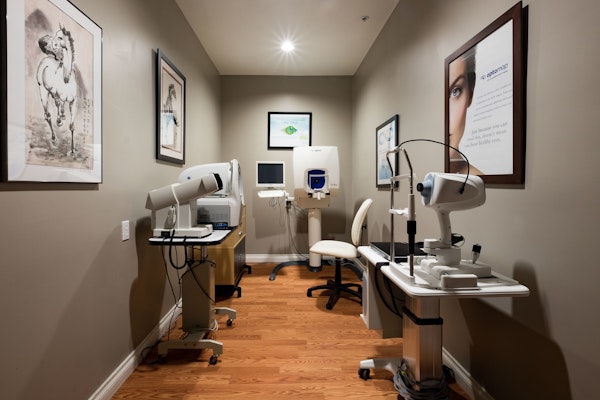
Monovision
Age-related farsightedness (presbyopia) traditionally requires wearing reading glasses.
Monovision - the correction of one eye for close focus and the other for distance - can minimize or eliminate the need for glasses.
Why choose monovision?

Monovision Can Provide Many Benefits for the Right Candidates:
Convenience
With monovision, you do not need to carry reading glasses. You can read text messages and menus without having to rely on cumbersome corrective eyewear.
Confidence
Today, the ages at which presbyopia can develop (35 to 50) are by no means considered "old," but bifocals and reading glasses can certainly make you feel that way.
Versatility
Wearing contacts, having intraocular lenses implanted, or undergoing LASIK or PRK surgery can achieve monovision. Patients often begin by wearing contacts, and if they like the results, they can choose a more permanent solution.
Are monovision patients happy with the results?

What does monovision cost?
LASIK and PRK cost about $2,000 per eye. Contact lenses can cost about $250 to more than $400 per year for the lenses and the solution. An exam and fitting can cost from $50 to $300. Your insurance plan may cover a portion of your expenses related to contacts. If you undergo cataract surgery, the average premium for achieving monovision with intraocular lenses is $2,375 per eye. If you choose to forego these treatments, prescription reading glasses can cost $200 to more than $1,000, depending on your insurance coverage.
One eye is attuned for reading and other close tasks, while the other is corrected for distant focus.
There are three primary ways:
Your optometrist can prescribe two different contact lenses. One will be attuned for close focus and the other will help you focus on distant objects.
You can undergo LASIK or PRK to achieve permanent corneal refinements that allow close focus in one eye and distance focus in the other.
If you have cataracts, you can request to receive intraocular lenses (IOLs) that provide close and distant focus respectively.
Basic Means of Coping with Presbyopia
You can use reading glasses or treat both eyes for close or distance focus using contacts, LASIK, PRK, or IOLs. This requires using glasses to compensate for a lack of comprehensive focus. Or, you can choose monovision, which grants greater freedom from glasses than these options. However, distance focus is compromised to a degree, and glasses may be required for driving. Some cataract patients choose to receive multifocal IOLs, but this may also require glasses in some instances.
An age-related decline in vision is inevitable. Fortunately, a dependency upon glasses may not be. Speak to your doctor today about whether monovision is right for you.









